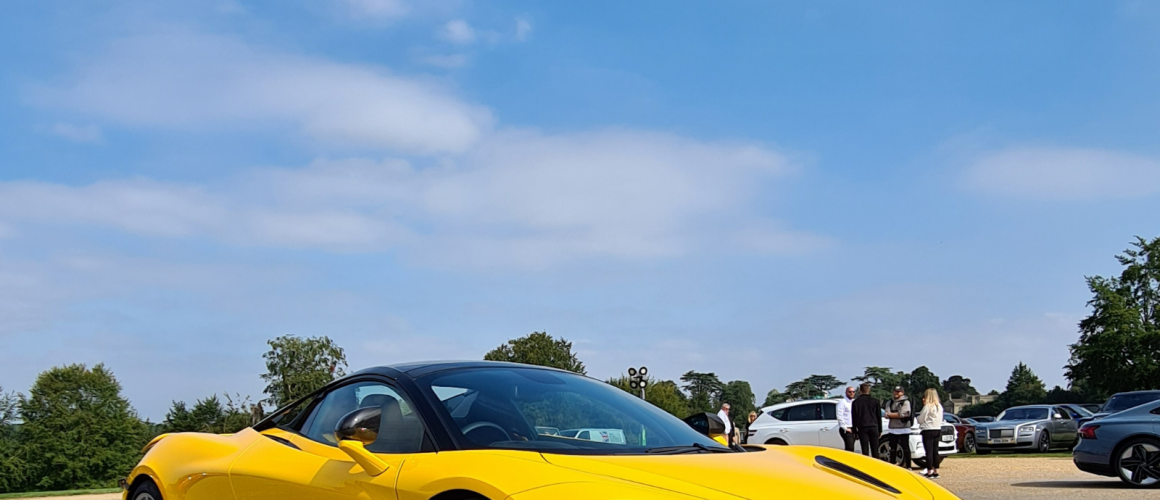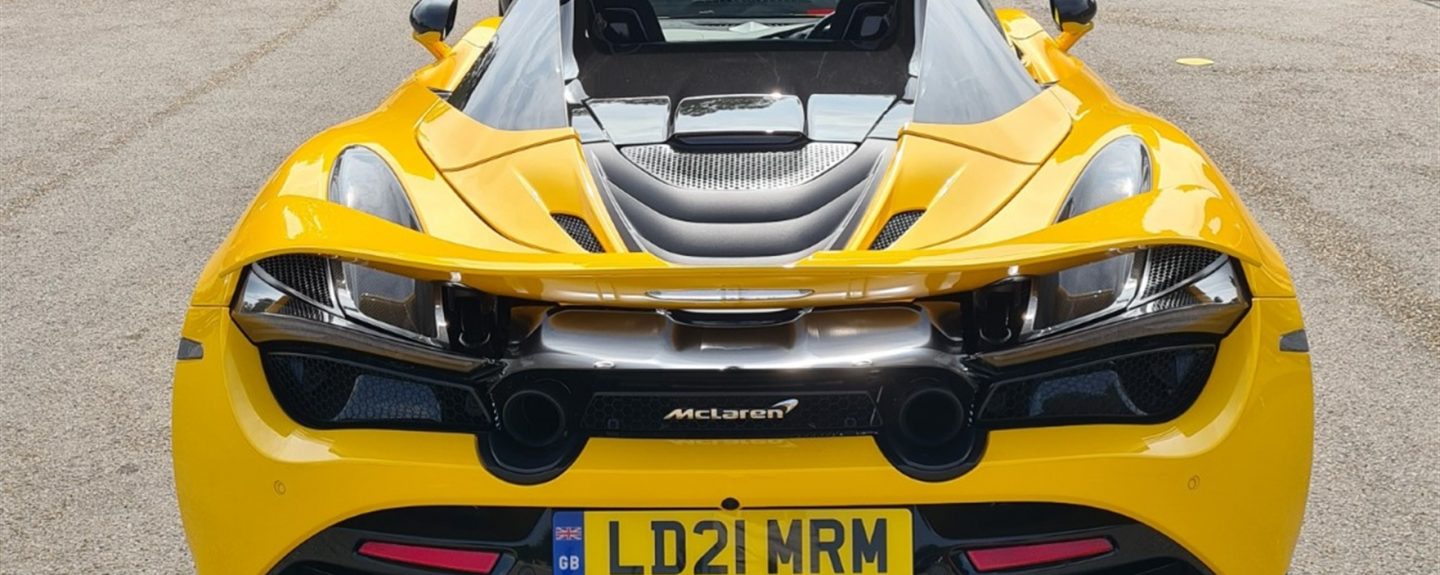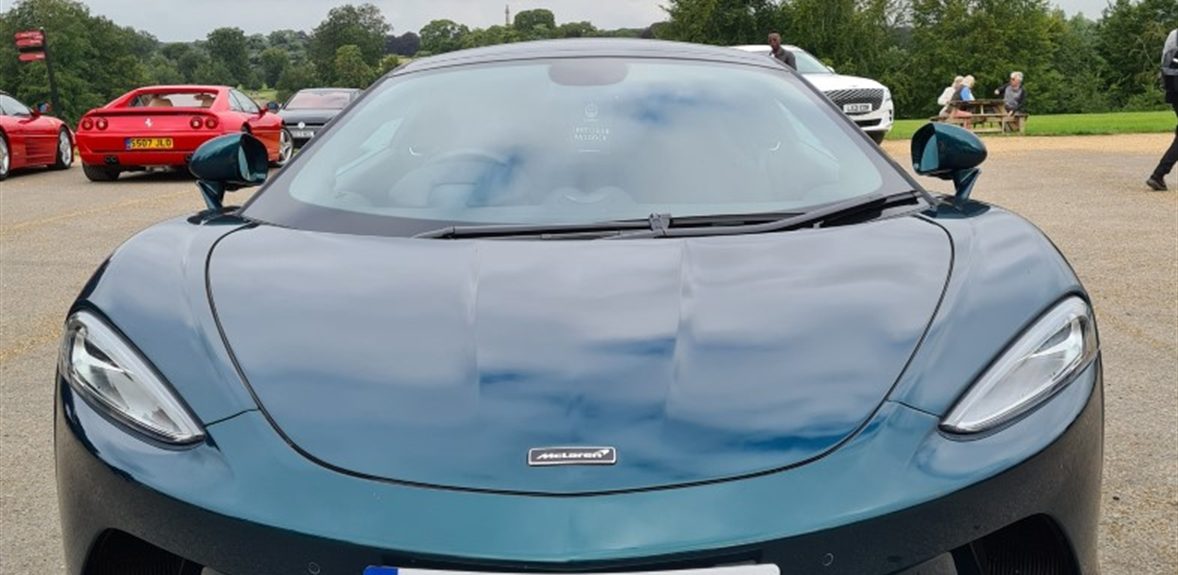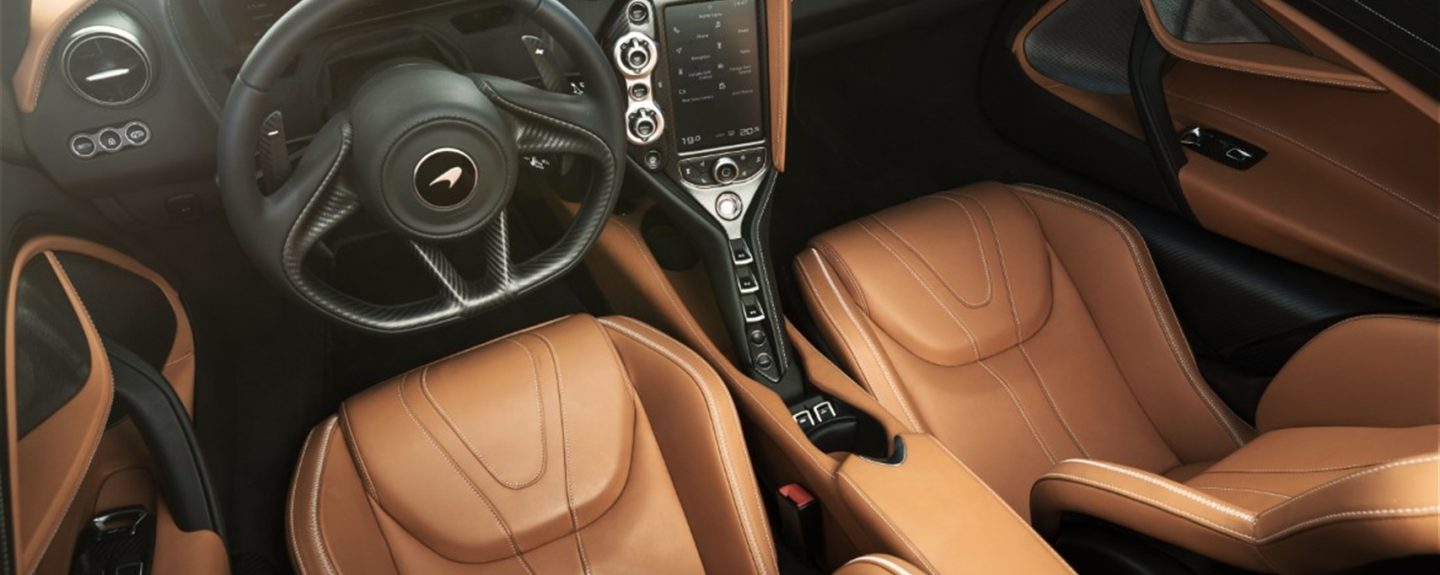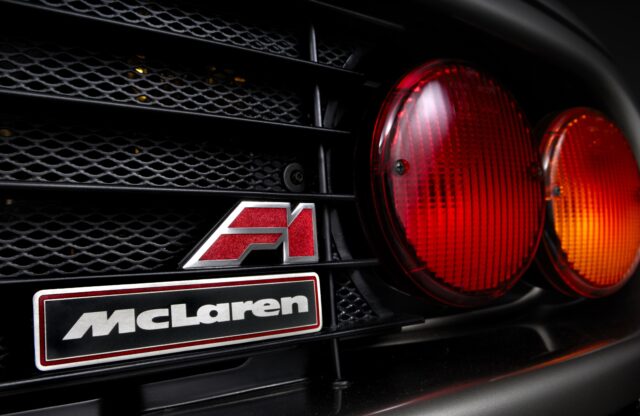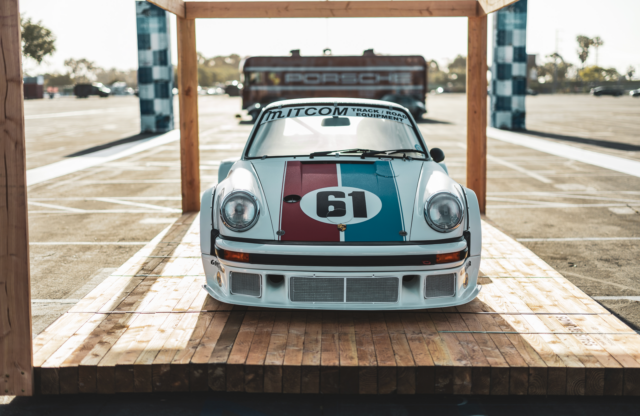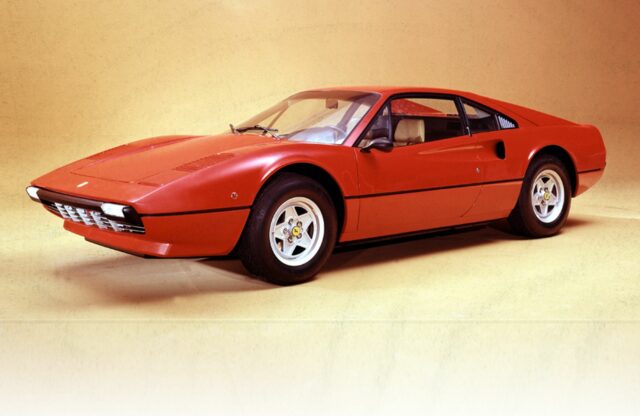Words: Elliott Hughes | Photography: McLaren
Everyone’s minds are filled with important dates. September 3, 2021, is a date I’ve recently added to my personal collection of numerical nostalgia cues – not that I would have known the week before.
It was supposed to be a Friday like any other; there was a bill to pay, some work to do, but nothing spectacular. That all changed when an email from McLaren Automotive asked if I was available to drive a McLaren GT and a 720S Spider at Salon Privé that day?
Inevitably, the answer was “yes please”, and September 3 was circled with a red Biro. Why the excitement? Well, I may be late to the party, but these McLarens were my first, and you know what they say about that…
The McLaren GT and 720S are designed to do very different things. The former, just as its name suggests, is a grand tourer, designed to rapidly inhale ribbons of road while its driver basks in its leather-bound interior. On the other hand, the 720S Spider is a weapons-grade supercar, with an emphasis on vision-blurring acceleration and skater-like agility.
But now is not the time for comparisons – that will come later – it’s time to drive. First up is the GT, and it’s immediately obvious that this is not your traditional grand tourer: the car is mid-engined and has a suspiciously supercar silhouette.
The GT’s bodywork is elegant, unfussy, clean. Its absence of serrated edges, winglets and strakes mean that its design resembles a 2000s supercar far more closely than an archetypal front-engined grand tourer from Aston Martin, Bentley or Ferrari. The subtlety of its Serpentine Green paintwork does infer some grand tourer personality, though, especially when parked next to the sinuous Spider finished in eye-popping Volcano Yellow.
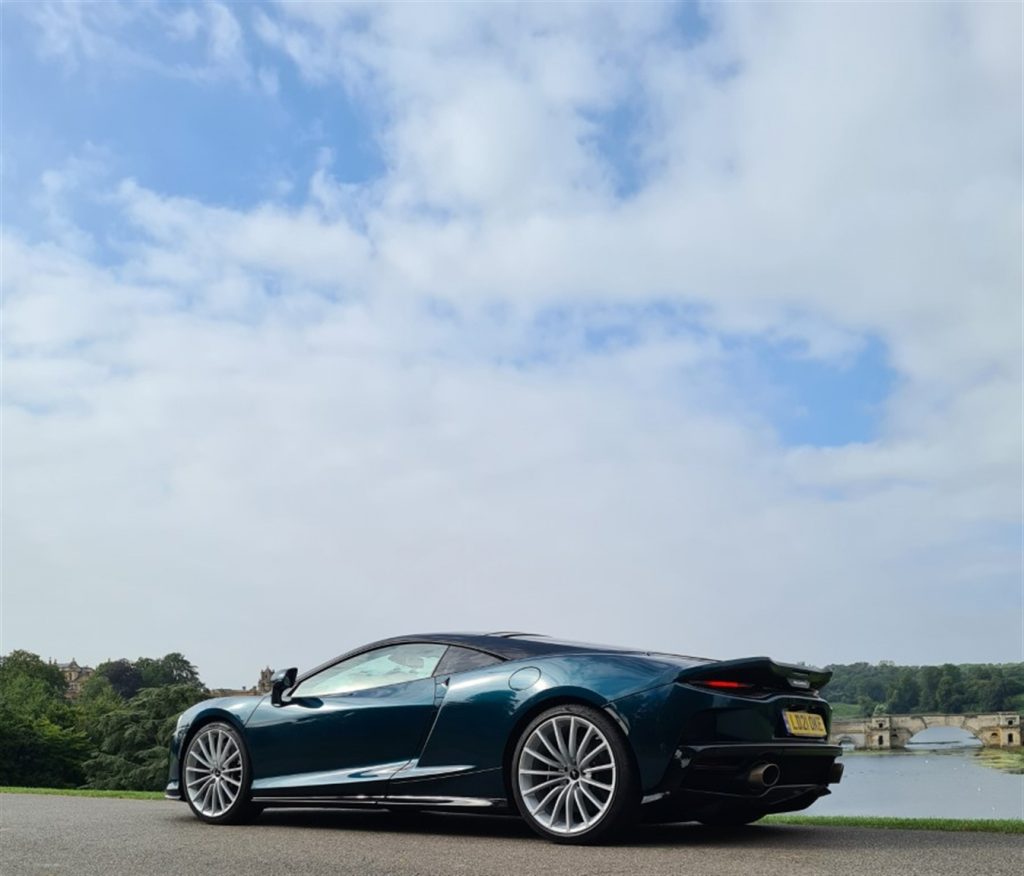
Push the GT’s door handle cleverly concealed in the mouth of each intake, and the dihedral door ascends triumphantly skyward, its lightness revealing the latticework of carbonfibre beneath the paintwork. With the door open, you’re greeted by the protrusion of a huge sill that forms part of the motor sport-inspired carbonfibre monocoque. Is this really a grand tourer?
Perhaps the interior can provide some answers. Once ensconced inside, you’re greeted by the smell of supple tan leather and the light airiness created by the glazed roof and C-pillars. The electric seats are well judged and comfortable, with just enough bolstering – although the seat controls are far from intuitive. The driving position is good, if a touch too high.
The steering wheel is a marriage of billet aluminium and leather, and is devoid of any distracting buttons. The alloy pedals are perfectly placed, and the brake is easily accessible to either of your feet – not that it matters today. Sleek silver speaker grilles house an excellent Bowers & Wilkins sound system, and a slick, simple infotainment screen adorns the centre of the dash.
Press the red engine start button and the GT’s 612bhp 4.0-litre twin-turbo V8 comes to life with a growl that’s purposeful but restrained. With the seven-speed dual-clutch gearbox set to automatic, and the car set to Comfort mode, it’s time to set off, which immediately presents a challenge; weaving an unfamiliar and very powerful automobile between narrow metal fencing, crowds of people and extremely expensive cars.

It should have been a nerve-racking experience, true to motoring lore that insists exotic cars are wide, ungainly, difficult to drive and have poor visibility. On the contrary, the GT feels as usable and unintimidating as any other car would in this sort of situation; it feels – dare I say it – normal. The journey into the nearest town reinforces this impression. Excellent visibility, supple suspension, sensible ride height and parking aids put you at ease.
It’s on a sweeping British A-road that the GT’s true capabilities and personality are revealed. With the gearbox now in manual and Track Mode selected, the McLaren’s personality changes. The steering becomes weightier, the suspension tauter, and the exhaust note racier.
Pull the left metal paddle a couple times and the car automatically blips the throttle and downshifts almost instantaneously. Then, a press of the accelerator is rewarded with an addictive surge of turbocharged thrust – all the way to 8200rpm. With the engine spinning above 3000rpm and the turbos spooled, you could be fooled into thinking it’s naturally aspirated, such is the linearity and responsiveness of the power delivery.
The same can’t be said of the engine note, which is certainly not as demure as it was earlier in Comfort, but doesn’t possess the emotive howl of atmospheric flat-plane V8s of old. That aside, the angry and purposeful sound is still appealing, if not spine tingling, and the intermittent turbo whooshes and exhaust pops add plenty of character.
After a blast of acceleration, it’s time to test the brakes, which unusually for McLaren, are steel – carbon-ceramics are optional. The pedal feel is decent, and the stopping power is confidence-inspiring and effective, just as you’d expect.
The brilliance of the steering is made obvious as the road gets twistier. The hydraulic assistance is lightly weighted, and the steering is sharp and accurate, providing detailed road feedback that is often absent in modern cars. That gives you the confidence to place the nose wherever you choose.
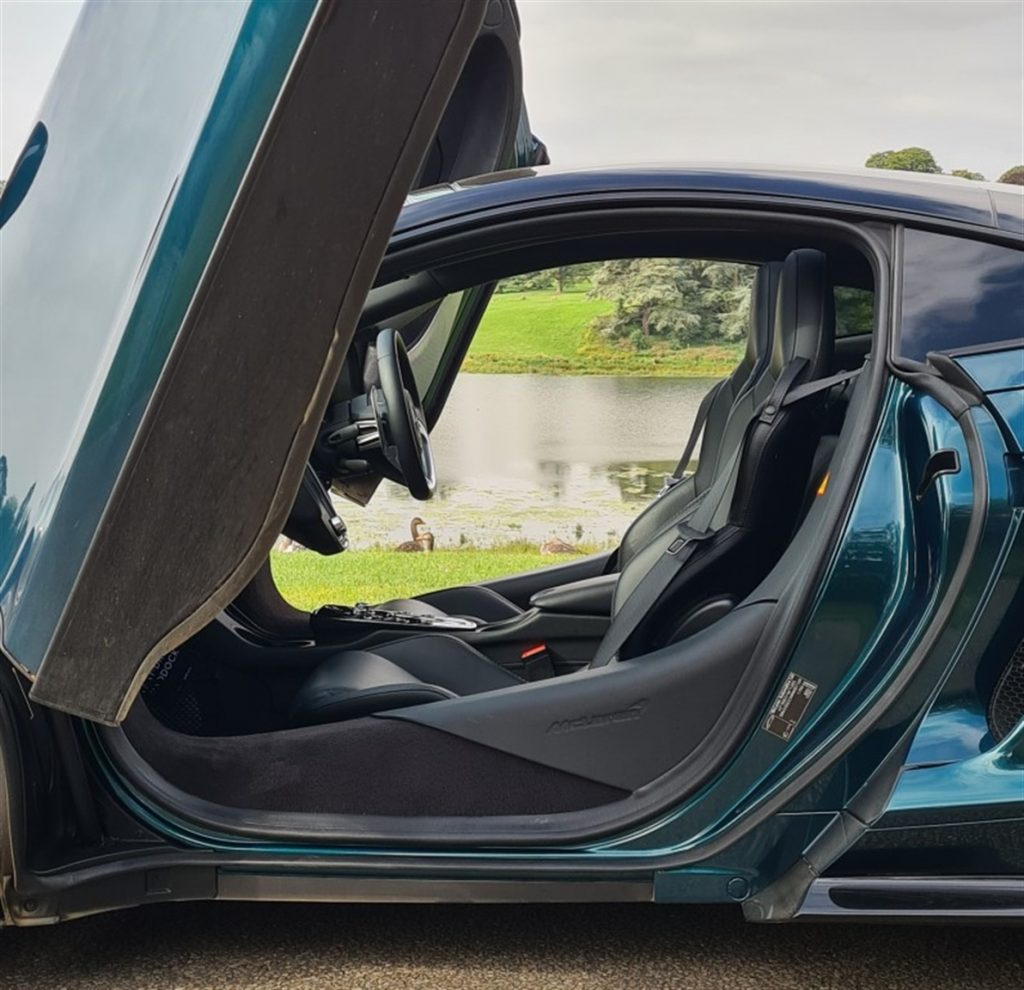
Narrow and bumpy English roads such as the one I’m driving on are notorious in their ability to expose any deficiencies a car’s suspension might have, with tramlining, bounciness and bottoming out being common complaints.
That’s where McLaren’s lauded Proactive Chassis Control comes in, which uses onboard computers to adjust the hydraulic cross-linked dampers in real time, according to driver inputs and road conditions. This means that the suspension is constantly running at optimal settings for a particular road and driver. That all sounds very complicated, but the result is a car that’s supple enough to deal with road imperfections, while producing very little in the way of body roll.
With all that excitement out the way and road-test time running out, it is time to switch the car back into Comfort and return the gearbox to automatic mode. Having pressed a couple of buttons, the GT returns to being the mild-mannered, relaxing and comfortable car I first climbed into.
Ironically, it’s the GT’s calmer side that arguably leaves the most marked impression. As a McLaren you’re expecting it to be the performance-oriented machine that it is, and by extension you assume it will feel as such whatever you might be doing. The fact that it totally contradicts this assumption is a showcase of modern engineering, and makes the car totally usable, year-round, on any road.
Is it a true grand tourer? In the traditional sense, not really. Aesthetically, ergonomically and dynamically, it’s arguably too close to being an out-and-out supercar. The cabin is very comfortable, but less spacious and opulent than that of, say, a Bentley Continental.
With the GT, it feels as though McLaren’s philosophy has been to take the architecture of a supercar and then make it softer and more civilised, whereas a traditional grand tourer is more closely aligned to a luxurious saloon car that’s been given a sharper edge. The GT simply offers compromises in different places that might appeal to some more driver-focused buyers.
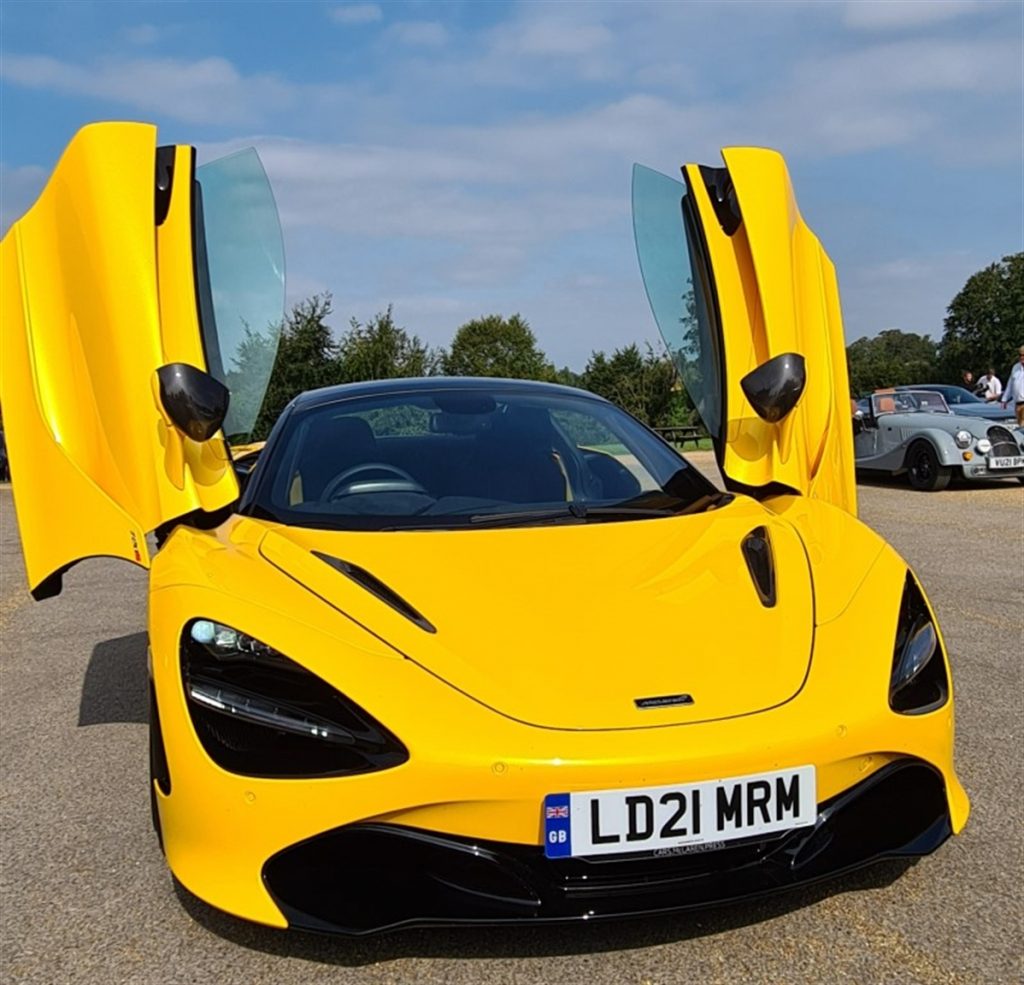
It will be interesting to see how the 720S Spider compares. It all feels very similar at first, albeit far more theatrical. The 720S Spider and GT share variations of the same carbonfibre monocoque, which means climbing over the same chunky sill to get it. At the flick of a switch, the electric roof swiftly and neatly folds itself behind the headrests, and can do so at speeds of up to 30mph.
With the sun now beaming into the cabin, it’s time to set off. The engine starts with a little more vigour than the GT’s, but the interior, controls, low-speed driveability and refinement feel largely similar. The most noticeable difference is more engine noise due to the open roof, less sound insulation, less leather and more tightly bolstered seats. Head out onto the road and drive normally, and it’s the same story; it feels like the GT, just with everything turned up a couple of notches.
Once again, the magic mode button is what shows you’re driving something with such spectacular performance, although the 720S Spider is certainly less subtle about its Jekyll and Hyde mannerisms. Choose Track mode and the instrument screen in front of you mesmerisingly rotates on the dashboard, transforming into a racing car-style digital screen dominated by a rev counter.
When the road opens up, it’s time to find out how the powertrain compares. The 720S Spider is fitted with a variation of the 4.0-litre twin-turbocharged V8 found in the GT, although tuned more aggressively and sending a staggering 710bhp through the rear wheels. The result is acceleration that is barely believable in a road car: 0-62mph in 2.9 seconds and 0-124mph in just 7.8 seconds. That’s almost identical to what the Ferrari LaFerrari hypercar can manage.
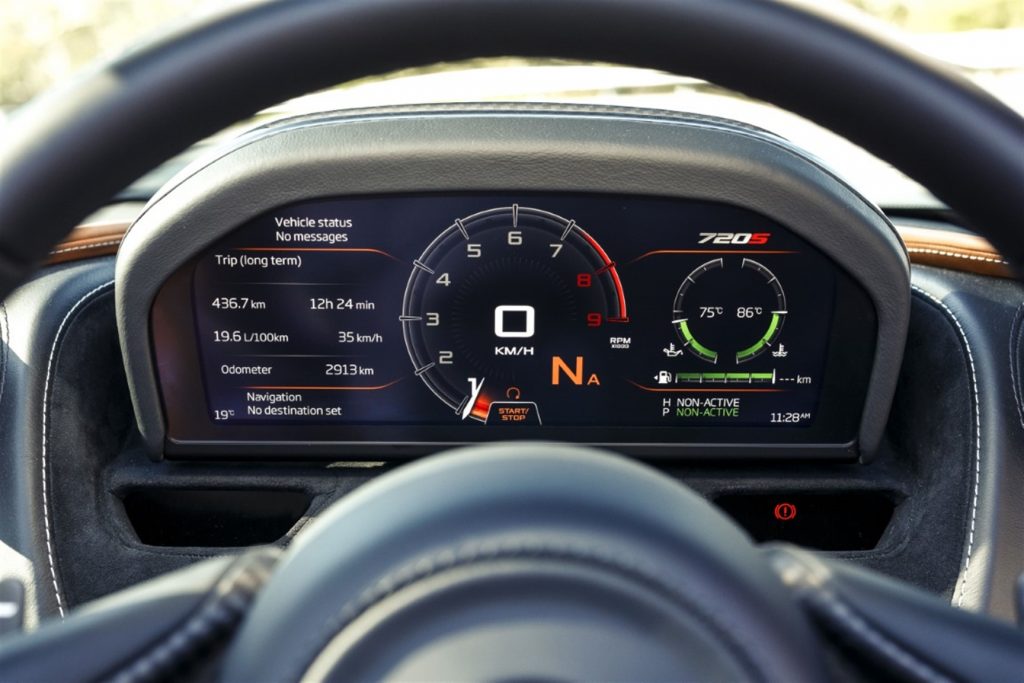
With the accelerator pinned, the rev counter climbs rapidly towards its dizzying 8500rpm redline, accompanied by the V8’s determined roar. It’s as intoxicating and addictive as you would expect, and a very easy way to find yourself in hot water. It’s so fast that a circuit is definitely required to fully explore the car’s performance.
Happily, the carbon-ceramic brakes and active aerodynamics prove to be just as capable at shedding speed as the engine is at creating it. Downshifts herald the same pops and bangs as the GT from the exhaust, just louder and more frequent. The brakes feel markedly different to the GT, though, requiring a firm push to bite properly and adding to the overall racing-car feel to the driving experience.
Somehow, the suppleness of the suspension is retained. It’s certainly a tad stiffer, but the fact it’s fitted with the same Proactive Chassis Control system means that the 720S Spider tackles compressions, potholes and cambers with surprising proficiency. The same goes for the steering, which retains the lightness and feel of the GT’s without being twitchy or nervous.
And herein lies the main sales hurdle the GT faces: the brilliance and breadth of capabilities of the 720S. Neither car is intimidating, unrefined, uncomfortable or even particularly noisy, but the more exotic styling and added drama, speed and focus of the 720S simply make it a more compelling package.
For better or worse, it seems the days of the analogue, intimidating and impractical supercar are truly over.
If you liked this, then why not subscribe to Magneto magazine today?

